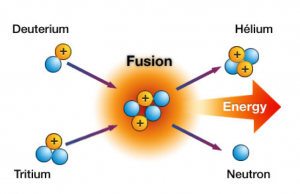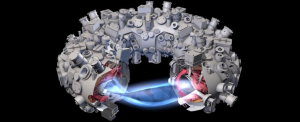Several decades ago a large portion of the scientific community had termed sustainable nuclear fusion, which is the process that powers the sun unattainable here on earth. This was due to the fact that reaching the ignition point where the nuclear reaction becomes self-sustaining seems impossible due to various issues. For instance, such processes requiring massive amounts of energy to just start and the output being less than the required energy input. Thus, the hopes of one day abandoning unsustainable approaches to energy production which are still in use seemed farfetched, however, there after carrying out intense research on this issue I believe that there may be hope after all. As I earlier mentioned one obstacle that stood in the way of attaining beneficial nuclear fusion reaction, was the indifference in power input and power generated where the latter was lesser than the former. Never the less, this barrier has been broken demonstrating that it may be still possible to use the sun’s approach to energy here on earth.

Chemical process of Nuclear Fusion Source: www.extremetech.com
This was reported by various studies and experiments, which have been conducted worldwide in the elusive search for nuclear fusion energy. An example I stumbled upon was the article published in Nature an international scientific journal where it stated that energy created exceeded the amount used for the fusion process (Hurricane, Callahan, Casey, Celliers, Cerjan, Dewald, & Kline, 2014). This has been made possible due to various advancement in the process of achieving nuclear energy with the main ones being Inertial Confinement Fusion (ICF) and Magnetic confinement Fusion (MCF). These have allowed better control of these reactions and such not only allow more power to be generated but also sustains the possibility of one-day achieving ignition in these reactions. Progress is also being made on other fronts in the field of Nuclear energy. For instance, one key process in nuclear fusion is achieving and sustaining high plasma temperatures, and scientists in China have gone beyond the one-minute mark in the nuclear reactions (Rundel, 2016). Such achievements increasingly show that human beings can harness the energy process of the sun, which fuses lighter atoms into heavier ones and at the same time, creates energy is in the reach of humanity, however more effort is required.

Advanced Nuclear reactor outlook source: www.sciencealert.com
Nuclear fusion power plants may be something that will be achieved in the next decade years says experts responsible for the “International Thermonuclear Experimental Reactor (ITER) project” (Clery, 2015). Nevertheless, I and others who have looked into this issue point out that more efforts are necessary for this feat to be accomplished and this are not only required from the scientific community but the social and political spheres of the globe. Nuclear fusion would mean abundant and sustainable energy for the world and this brings on endless possibilities for the human race. In its onset in the 50’s and 60’s, scientist saw this process of energy production as achievable but underestimated the complexities around it. However, their aspirations of achieving large-scale power production through this process are still alive as more and more breakthroughs are being achieved. The last obstacle seems to be that of achieving ignition and though this seems like the hardest barrier, I am optimistic that human ingenuity, which has triumphed for centuries, will allow the successful creation of energy through nuclear fusion.
References
Daniel Clery, (2015). “ITER fusion project to take at least 6 years longer than planned.” Science Magazine. Retrieved from: http://www.sciencemag.org/news/2015/11/iter-fusion-project-take-least-6-years-longer-planned
Hurricane, O. A., Callahan, D. A., Casey, D. T., Celliers, P. M., Cerjan, C., Dewald, E. L., … & Kline, J. L. (2014). Fuel gain exceeding unity in an inertially confined fusion implosion. Nature, 506(7488), 343-348.
Micheal Rundel, (2016). “Chinese team makes unexpected fusion breakthrough.” Wired. Retrieved from: http://www.wired.co.uk/article/china-fusion-breakthrough